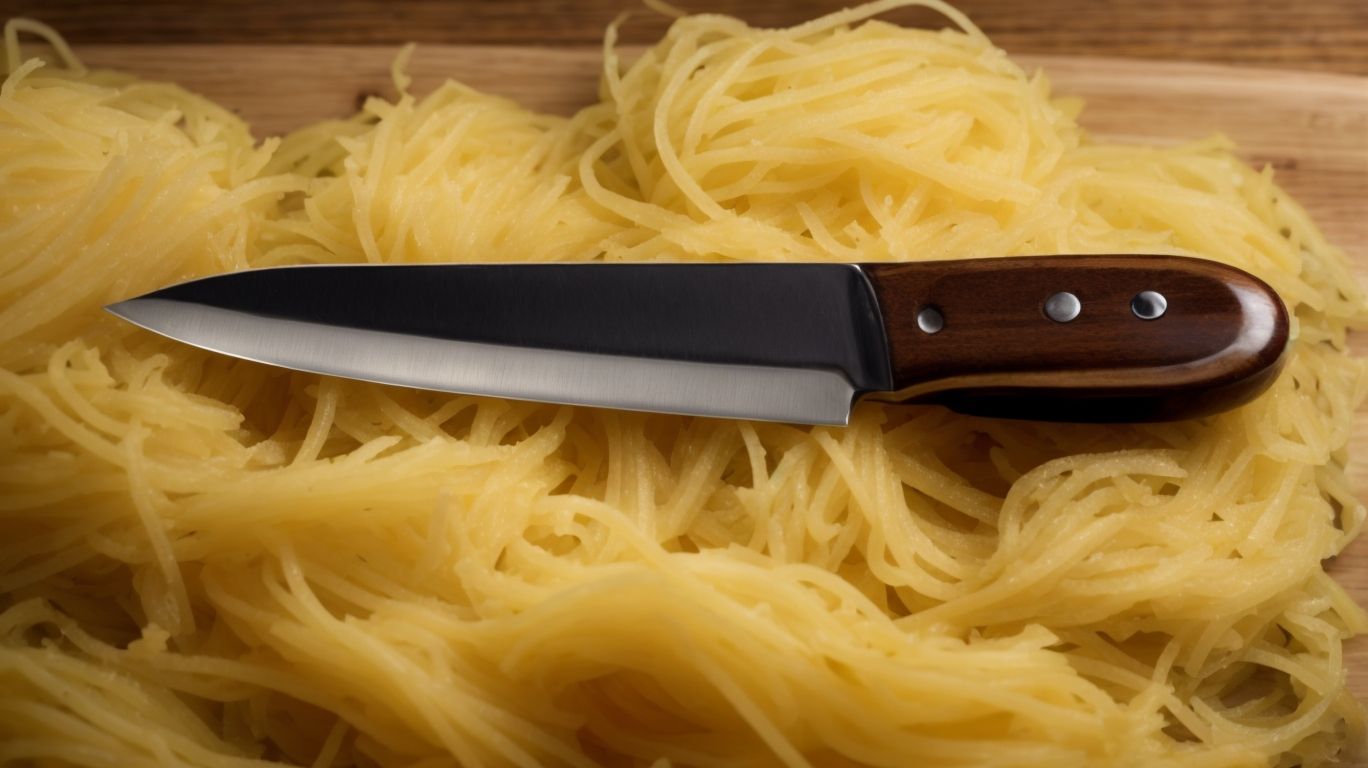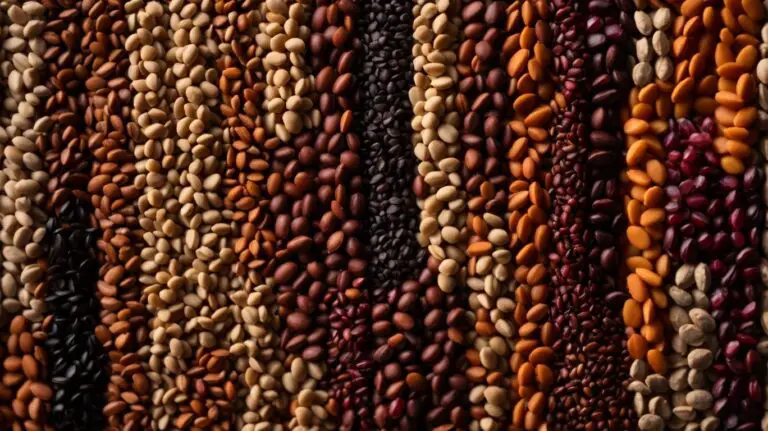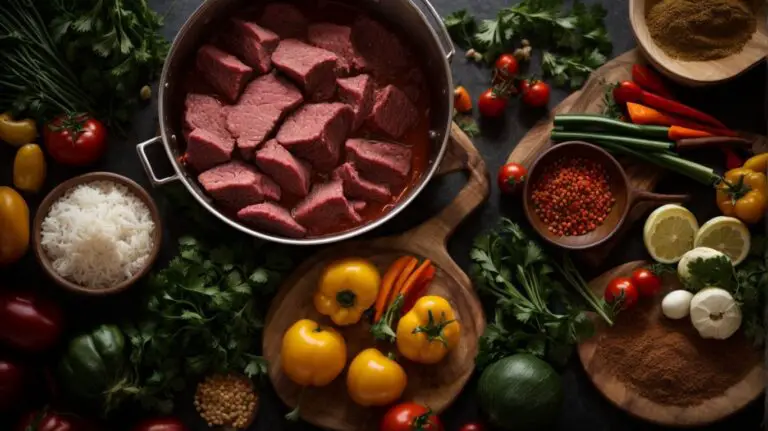How to Cook Spaghetti Squash?
Looking to add a healthy and versatile ingredient to your cooking repertoire?
Spaghetti squash is the perfect choice! This article covers everything you need to know about spaghetti squash – from selecting the perfect one at the store, preparing it for cooking, various cooking methods, serving ideas, and helpful tips for optimal results.
Join me, Chris Poormet, as we explore the world of spaghetti squash and enhance your culinary skills. Let’s start cooking!
Key Takeaways:
What is Spaghetti Squash?
Spaghetti squash, a popular winter squash variety, is known for its unique stringy flesh that resembles spaghetti noodles when cooked.
Its mild, slightly sweet flavor pairs well with a variety of seasonings, making it a versatile ingredient in both savory and sweet dishes. The texture of spaghetti squash is tender yet slightly crunchy, adding a delightful contrast to recipes such as stir-fries, casseroles, or salads. This squash is also famous for its low calorie and carbohydrate content, making it a preferred choice for health-conscious individuals.
How to Choose the Perfect Spaghetti Squash?
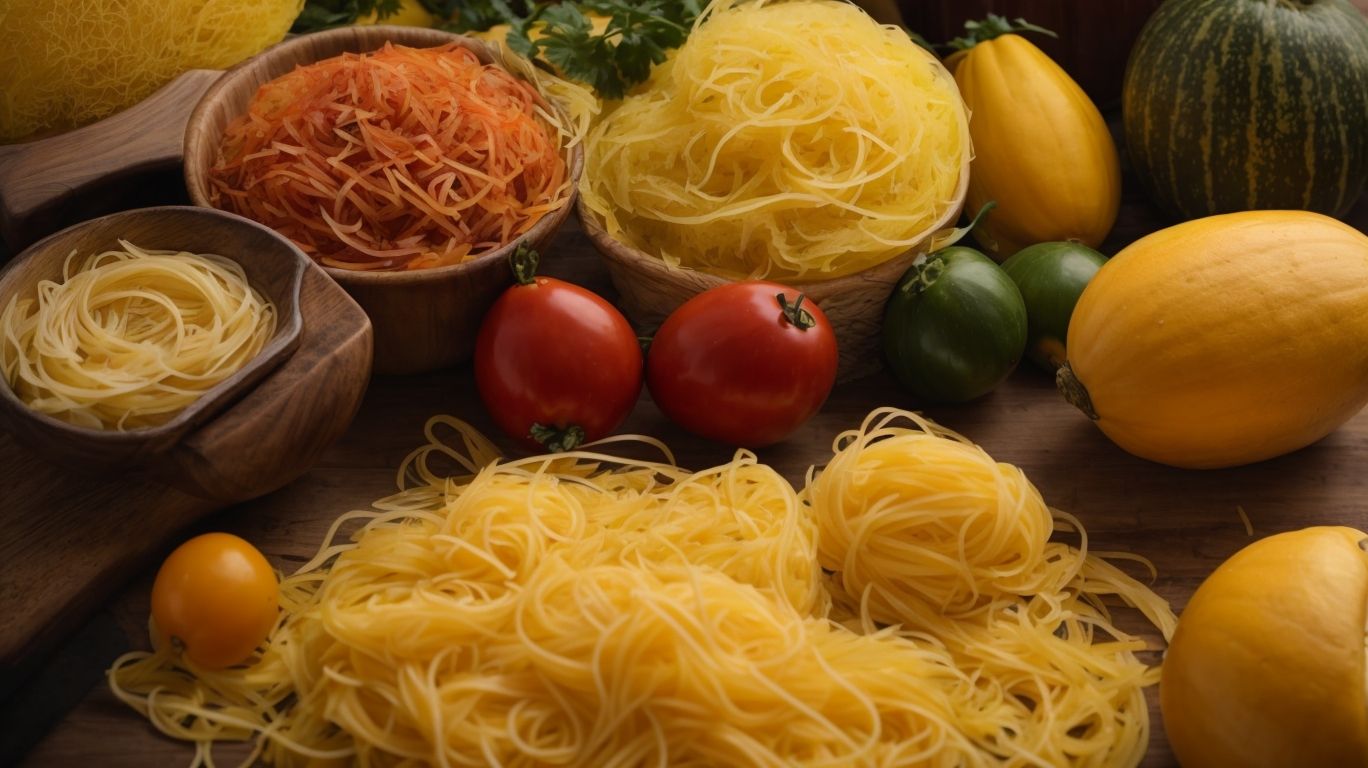
Credits: Poormet.Com – Albert Nelson
When selecting a spaghetti squash, ensure it meets key criteria such as firmness, color, and absence of soft spots or bruises to guarantee optimal quality and flavor.
First and foremost, examine the squash for firmness; a fresh spaghetti squash should feel solid and heavy for its size, indicating a good moisture content and ripeness. Look for a deep yellow to orange hue, as vibrant color often signifies peak ripeness and flavor. Avoid any squash with green patches, as it may indicate underripeness. Check for any soft spots or bruises, as these could indicate spoilage or improper handling during transport. By paying attention to these aspects, you can pick the best spaghetti squash for your culinary creations.
Check for Firmness and Weight
When assessing a spaghetti squash, pay attention to its firmness and weight as these characteristics can indicate freshness and ripeness.
A firm and heavy spaghetti squash is often a sign of optimal ripeness. The firmness suggests that the squash is not overripe or mushy, ensuring a pleasant texture once cooked. The weight is a good indicator of the moisture content within the squash, which directly impacts its flavor and juiciness. Opting for a spaghetti squash that is firm and weighty will result in a more satisfying cooking experience with enhanced flavors and textures.
Look for a Yellow or Orange Color
Opt for spaghetti squash with a vibrant yellow or orange hue, as these colors often indicate maturity and sweetness in the squash.
Color is not just a visual appeal but also a key indicator of ripeness and flavor. The intensity of the yellow or orange hue can give you clues about the sweetness level of the squash. Generally, deeper and richer colors suggest a more developed flavor profile, indicating a sweeter and nuttier taste. By selecting spaghetti squash with these vibrant colors, you are more likely to enjoy a satisfying culinary experience with a perfect balance of natural sweetness and savory notes.
Avoid Spaghetti Squash with Soft Spots or Bruises
Steer clear of spaghetti squash that exhibits soft spots or bruises, as these imperfections can signify decay or compromised quality in the squash.
Soft spots or bruises on a squash are clear indicators of potential issues that could significantly impact the taste, texture, and overall cooking experience. When a spaghetti squash has soft spots, it often means that the inner flesh has started to deteriorate, leading to a mushy consistency that is less than desirable. Such compromised areas can also introduce unwanted flavors and affect the natural sweetness of the squash. Bruises on the squash can affect its structural integrity, making it more prone to collapsing or becoming overly mushy during the cooking process.
How to Prepare Spaghetti Squash for Cooking?
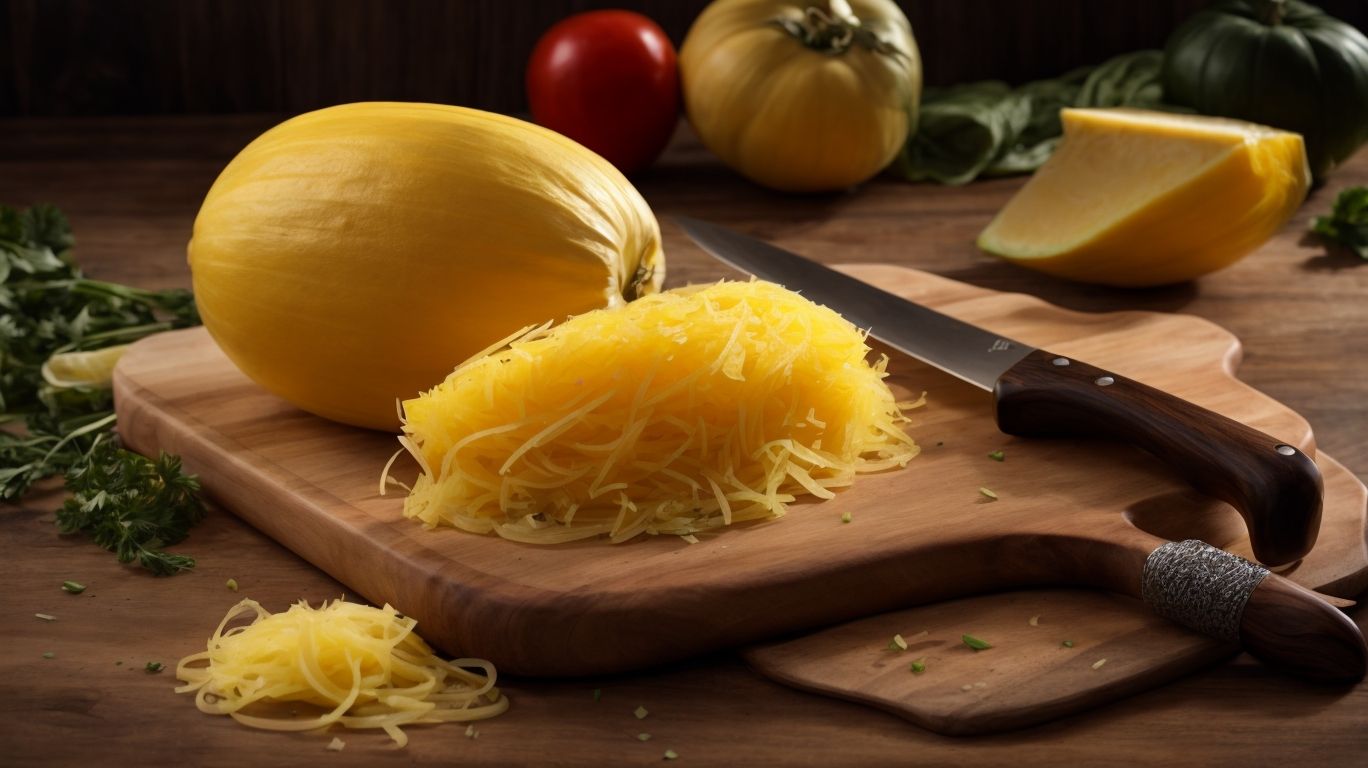
Credits: Poormet.Com – Ralph Baker
Preparing spaghetti squash for cooking involves washing the squash, cutting it in half lengthwise,
and removing the seeds and strings before proceeding with the desired cooking method.
To start, thoroughly rinse the spaghetti squash under cool running water to remove any dirt or debris on the surface. Next, with a sharp knife, carefully slice the squash in half lengthwise, ensuring to apply even pressure to avoid any accidents.
- Once halved, use a spoon or melon baller to scoop out the seeds and fibrous strings from each side of the squash.
This step is essential to create a clean hollow space where the flavors for your preferred recipe can develop.
Wash the Squash Thoroughly
Before cooking, it is crucial to thoroughly wash the spaghetti squash to remove any dirt or debris that may be present on the surface.
Washing the spaghetti squash properly is not just about removing visible dirt; it also helps eliminate any pesticides or chemicals that could be lingering on the skin. To clean the squash, start by rinsing it under cold running water. Using a vegetable brush can be helpful, especially for removing dirt trapped in the crevices. Scrubbing the squash gently will ensure a thorough cleaning.
By washing the spaghetti squash before cooking, you also reduce the risk of cross-contamination and ensure that your meal is prepared in a hygienic manner. This practice is essential to maintain overall kitchen cleanliness and food safety standards.
Cut the Squash in Half Lengthwise
Using a sharp knife, carefully cut the spaghetti squash in half lengthwise to expose the inner seeds and strands for removal.
Before starting the cutting process, it is crucial to ensure that your knife is sharp, as a dull blade can slip and cause accidents. Hold the squash firmly with one hand and use a steady, even pressure to slice through the squash from top to bottom.
For added stability, consider placing a damp towel or rubberized mat underneath the squash to prevent it from sliding around on the cutting surface. Remember to always curl your fingers under and keep them away from the path of the knife to avoid any mishaps.
Scoop out the Seeds and Strings
After cutting the squash, use a spoon to scoop out the seeds and strings from the center, ensuring a clean cavity for the cooking process.
When removing the seeds, a simple yet effective technique is to start at one end and gently scrape the spoon along the inner walls, being careful not to damage the surrounding flesh. This method helps to efficiently dislodge the seeds and strings without excessive effort. Some individuals find that using a small serrated grapefruit spoon or an ice cream scoop can work wonders in easily separating the seeds and strings from the flesh, streamlining the preparation process.
How to Cook Spaghetti Squash?
Cooking spaghetti squash offers various options such as baking, boiling, microwaving, or using an Instant Pot, allowing you to achieve different textures and flavors based on your preferred method.
When baking spaghetti squash, start by preheating your oven to 400°F. Cut the squash in half lengthwise, remove the seeds, and place it cut-side down on a baking sheet. Bake for around 40-50 minutes until tender.
For boiling, simply submerge the whole squash in a large pot of boiling water for 20-30 minutes until it can be easily pierced with a fork.
Microwaving is a quicker option; poke holes in the squash, microwave for 10-12 minutes, and let it rest before cutting.
As for the Instant Pot, add 1 cup of water, place the trivet inside, place the squash halves on top, seal the pot, and cook on high pressure for 7 minutes followed by a quick release.
Baking Method
The baking method for cooking spaghetti squash involves roasting the halves in the oven at 400°F until they turn golden and develop a caramelized flavor.
To start preparing spaghetti squash for baking, carefully slice the squash in half lengthwise and scoop out the seeds using a spoon. Drizzle the cut sides with olive oil and season with salt, pepper, and any desired herbs or spices for added flavor.
Place the prepared squash halves, cut side down, on a baking sheet lined with parchment paper or foil. It’s essential to ensure the squash is evenly spaced on the baking sheet to promote even cooking.
Preheat the oven to the suggested temperature of 400°F and place the baking sheet on the middle rack. Let the squash roast for around 40-50 minutes, or until the flesh becomes tender and easily shreds into spaghetti-like strands when scraped with a fork.
For an extra golden and caramelized finish, you can brush the tops of the squash with a little honey or maple syrup during the last 10 minutes of baking.
Boiling Method
Boiling spaghetti squash in water for a few minutes can help soften the strands and make them tender for a pasta-like texture.
-
When boiling spaghetti squash, ensure that the water is generously salted to enhance the flavor of the squash.
-
It is crucial to bring the water to a rapid boil before adding the squash to prevent it from becoming waterlogged.
-
Cook the squash for about 15-20 minutes until it is fork-tender but still holds its shape to maintain a slightly crunchy texture.
-
Boiling the squash too long can lead to mushiness, so keep a close eye on the cooking time.
Microwaving Method
Microwaving spaghetti squash slices for a few minutes offers a quick and convenient way to soften the strands and prepare them for various dishes.
When microwaving spaghetti squash, it’s crucial to select a microwave-safe dish that can accommodate the size of the squash slices without crowding. Placing the slices in a single layer helps ensure even cooking. To prevent the squash from drying out, cover the dish with a microwave-safe lid or plastic wrap, leaving a small vent for steam to escape. Cooking times may vary depending on the microwave’s wattage and the thickness of the slices, but usually, 6-8 minutes on high power should suffice.
Instant Pot Method
Using an Instant Pot or pressure cooker can expedite the cooking process for spaghetti squash, providing a quick and efficient method to soften the strands for various recipes.
Spaghetti squash is a versatile vegetable that can be transformed into a healthy alternative to traditional pasta. By utilizing the Instant Pot, you can significantly reduce the cooking time, allowing you to enjoy this nutritious dish in a fraction of the time it would take using conventional methods.
The beauty of using Instant Pot for spaghetti squash lies in its ability to lock in flavors and nutrients while cutting down on the overall cooking duration. This means you not only save time but also retain more of the essential vitamins and minerals that this vegetable boasts.
How to Serve Spaghetti Squash?
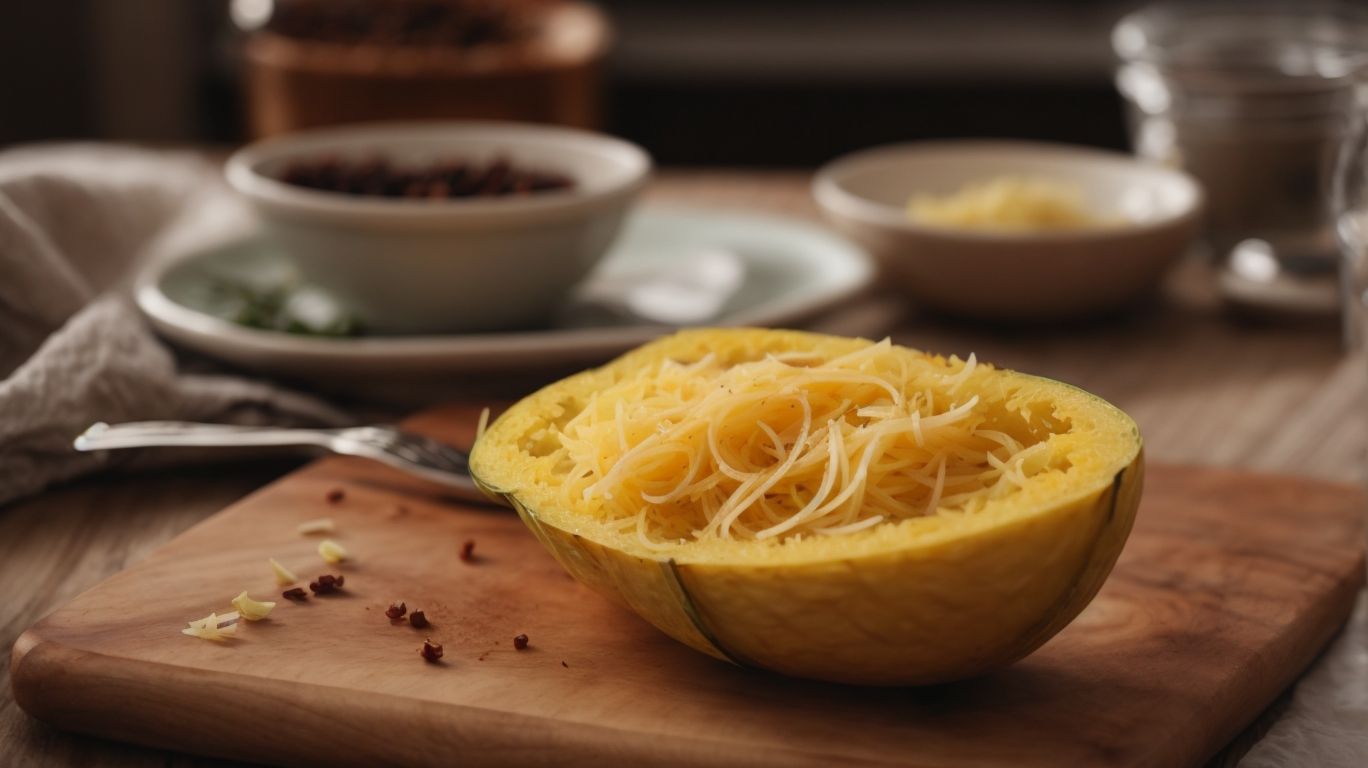
Credits: Poormet.Com – Randy Hernandez
Spaghetti squash can be served in various ways, such as a pasta substitute, as a side dish, or incorporated into casseroles and soups for added flavor and texture.
When used as a pasta alternative, simply roast the squash, then scrape out the flesh with a fork to create long strands resembling spaghetti. These strands can be topped with tomato sauce, pesto, or alfredo for a delicious and nutritious meal. Spaghetti squash also shines as a versatile side dish, lightly seasoned with olive oil, herbs, and a sprinkling of parmesan cheese. In heartier dishes like casseroles and soups, the squash adds a sweetness and a subtle squash flavor that complements savory ingredients.
As a Pasta Substitute
Substituting traditional pasta with spaghetti squash strands offers a lighter and vegetable-packed alternative with a unique texture and flavor profile.
Spaghetti squash, when cooked correctly, has a stringy texture that resembles traditional spaghetti, making it an excellent option for those looking to reduce their carb intake or add more vegetables to their diet. The mild flavor of spaghetti squash allows it to easily absorb various seasonings, sauces, and ingredients, providing a versatile base for a wide range of culinary creations.
From a nutritional standpoint, spaghetti squash is low in calories and carbohydrates compared to pasta, making it a popular choice for individuals following a low-carb or keto diet. It is also a great source of essential vitamins, minerals, and fiber, promoting overall health and well-being. Incorporating spaghetti squash into your meals can help increase your vegetable intake while adding a fun twist to traditional pasta dishes.
As a Side Dish
Serving roasted spaghetti squash as a flavorful side dish can elevate any meal, offering a subtle sweetness and a hint of caramelization with simple seasonings.
When preparing roasted spaghetti squash, start by preheating the oven to 400°F. Carefully slice the squash in half lengthwise and scoop out the seeds. Place the squash halves cut-side down on a baking sheet lined with parchment paper. Roast them in the oven for about 40-45 minutes until the flesh is tender and easily pierced with a fork.
To enhance the flavor, drizzle the squash with olive oil and sprinkle with salt, pepper, and a dash of garlic powder before roasting. For those who enjoy a bit of heat, adding a pinch of red pepper flakes can provide a nice kick.
Once the squash is out of the oven, use a fork to scrape the flesh into long, spaghetti-like strands. You can then toss the strands with a little more olive oil and fresh herbs such as basil or parsley for added freshness.
When serving, consider topping the roasted spaghetti squash with a sprinkle of grated Parmesan cheese or a drizzle of balsamic glaze for extra flavor. This versatile side dish pairs well with grilled meats, roasted vegetables, or as a standalone light meal.
In Casseroles or Soups
Incorporating spaghetti squash in casseroles or soups adds a nutritious and versatile element to the dish, enhancing the vegetable content and offering a vegan-friendly option like spaghetti squash pesto.
Spaghetti squash is a fantastic substitute for traditional pasta, giving a lighter and healthier twist to classic recipes. When roasted, the strands of spaghetti squash mimic the texture of noodles, making it an excellent low-carb alternative.
Its mild flavor profile allows it to pair well with various ingredients, such as:
- tomatoes
- basil
- garlic
creating a base for delicious casseroles or soups.
Spaghetti squash is packed with essential nutrients like fiber, vitamins C and B6, and potassium, adding a nutritional boost to your meal.
Tips and Tricks for Cooking Spaghetti Squash
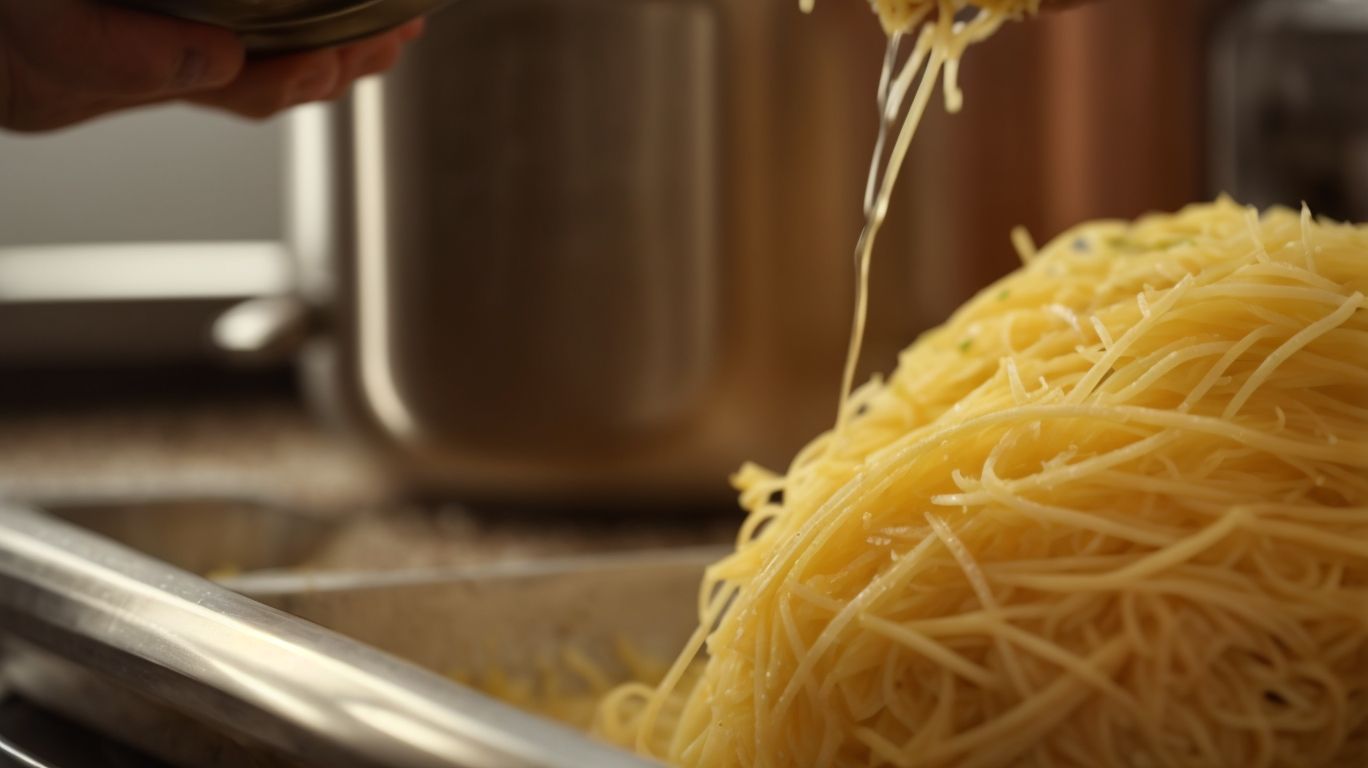
Credits: Poormet.Com – Bradley Roberts
Enhance your spaghetti squash cooking experience with useful tips such as adding seasonings for flavor, using a fork to separate the strands efficiently, and storing leftovers properly for future consumption.
When seasoning spaghetti squash, consider using a mix of herbs like basil, oregano, and thyme to elevate its taste profile. Try incorporating olive oil and a sprinkle of Parmesan cheese for a savory twist.
To efficiently separate the strands, simply scrape the fork along the flesh after it has been cooked. This action will effortlessly create spaghetti-like noodles that you can then use as a base for various dishes.
For storing leftovers, place the cooked squash in an airtight container and refrigerate it promptly. Properly stored squash can last up to 3-5 days in the fridge, ready to be reheated and enjoyed.
Add Seasonings for Flavor
Elevate the taste of spaghetti squash by incorporating flavorful seasonings such as garlic powder, olive oil, salt, and pepper, enhancing the overall dish with a delicious and aromatic profile.
For a burst of freshness and vibrancy, consider adding a squeeze of fresh lemon juice and a sprinkle of chopped parsley right before serving. These additions not only brighten up the flavors but also add a pop of color to your dish.
Experimenting with different herbs and spices like rosemary, thyme, or red pepper flakes can bring a whole new dimension to the squash, infusing it with layers of complexity.
When seasoning spaghetti squash, remember to mix the seasonings evenly to ensure that every bite is packed with delicious flavors. A drizzle of balsamic glaze or a sprinkle of parmesan cheese can also elevate the dish further.
Use a Fork to Separate the Strands
Utilize a fork to separate the cooked spaghetti squash strands easily, achieving a pasta-like texture that enhances the dish’s presentation and overall eating experience.
When using a fork to fluff and separate the cooked spaghetti squash, you not only create a visually appealing dish but also improve its mouthfeel. By delicately raking the fork through the strands, you can create a fluffy and separated texture that closely resembles traditional pasta. This technique allows for better integration of sauces and seasonings, ensuring each bite is flavorful and satisfying. The act of ‘fluffing’ the squash strands with a fork adds a level of finesse to the dish, making it seem more gourmet and inviting to eat.
Store Leftovers Properly
After cooking, ensure to store leftover spaghetti squash in the refrigerator within an airtight container to maintain freshness and extend its shelf life for future consumption.
Refrigeration is crucial in preserving the quality of leftover spaghetti squash as it helps slow down bacterial growth and prevent spoilage. When selecting a container for storage, opt for a container that is both airtight and made of food-safe materials to prevent odors from leaching into the squash. Consider portioning the squash into smaller containers to facilitate quicker cooling and reheating. To enhance freshness preservation, you can also sprinkle a bit of lemon juice over the squash before sealing the container to help prevent discoloration.
Conclusion
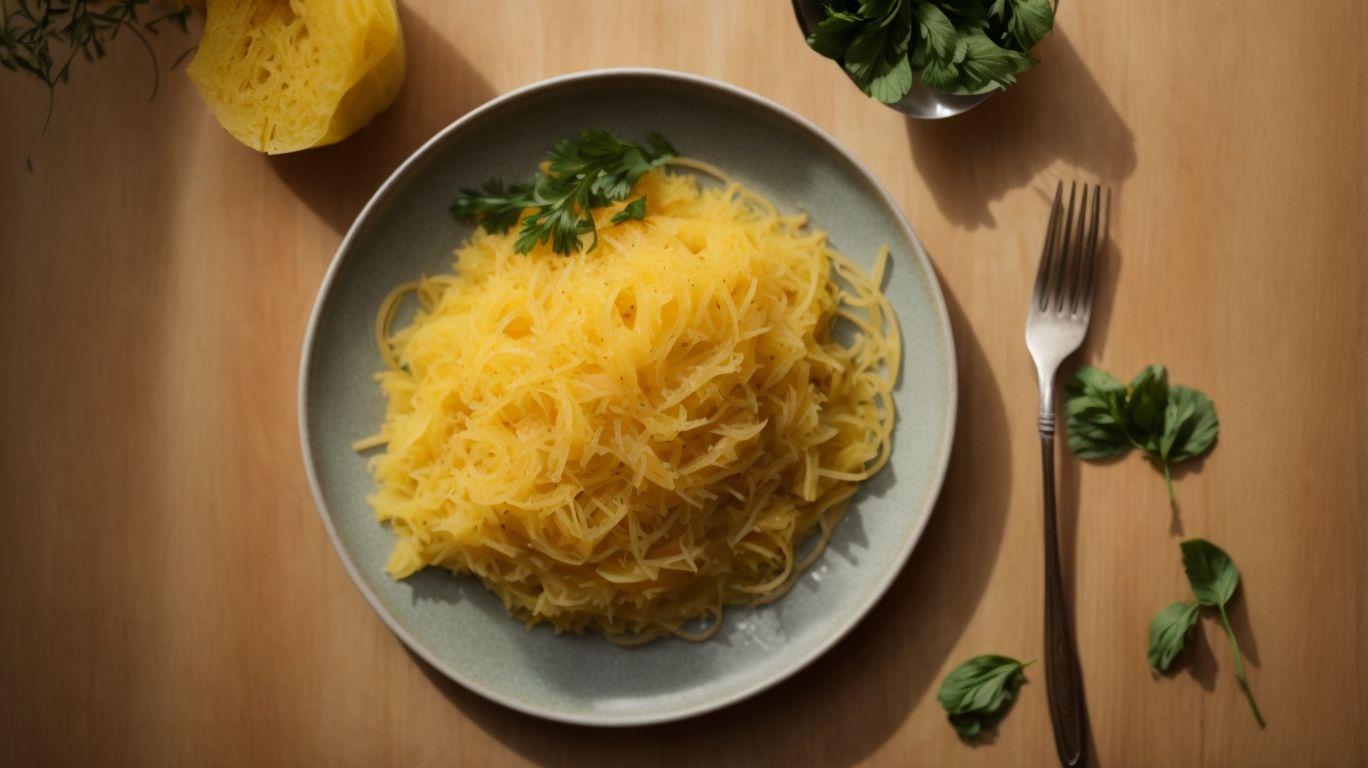
Credits: Poormet.Com – Andrew Nguyen
Mastering the art of cooking spaghetti squash opens up a world of culinary possibilities with its versatile nature and nutritional benefits, making it a delightful addition to any recipe repertoire.
Spaghetti squash, often referred to as the vegetable alternative to pasta, can be prepared in various ways to suit different culinary preferences. It can be roasted, steamed, or even microwaved, allowing for flexibility in cooking methods. Its mild flavor serves as a blank canvas, readily absorbing the flavors of seasonings, sauces, and toppings, enhancing the overall dish. Spaghetti squash is a nutrient-dense option, rich in vitamins, minerals, and fiber, promoting a healthy diet. Its low calorie content makes it a favorite among those looking to enjoy a satisfying meal while maintaining a balanced diet.
Frequently Asked Questions
How to Cook Spaghetti Squash?
Answer: To cook spaghetti squash, preheat your oven to 375°F and carefully cut the squash in half lengthwise. Scoop out the seeds and place the halves on a baking sheet. Bake for 30-40 minutes until the flesh is tender.
What is the best way to cut a spaghetti squash?
Answer: The easiest way to cut a spaghetti squash is to first pierce the skin with a sharp knife and then microwave it for a minute or two. This will soften the skin, making it easier to cut through.
Can you cook spaghetti squash in the microwave?
Answer: Yes, you can cook spaghetti squash in the microwave. Pierce the skin with a knife and microwave for 10-12 minutes, rotating every few minutes. Let it cool before cutting in half and scooping out the seeds.
Do you need to peel spaghetti squash before cooking?
Answer: No, you do not need to peel spaghetti squash before cooking. The skin is edible and will soften when cooked, making it easy to separate the flesh with a fork.
How do you know when spaghetti squash is done cooking?
Answer: Spaghetti squash is done cooking when the flesh is tender and easily separates into strands with a fork. You can also check by piercing it with a knife – if it goes in easily, it is done.
What are some creative ways to serve cooked spaghetti squash?
Answer: Cooked spaghetti squash can be served with your favorite pasta sauce, as a substitute for noodles in soups and stir-fries, or even as a base for a spaghetti squash pizza crust. The possibilities are endless!

